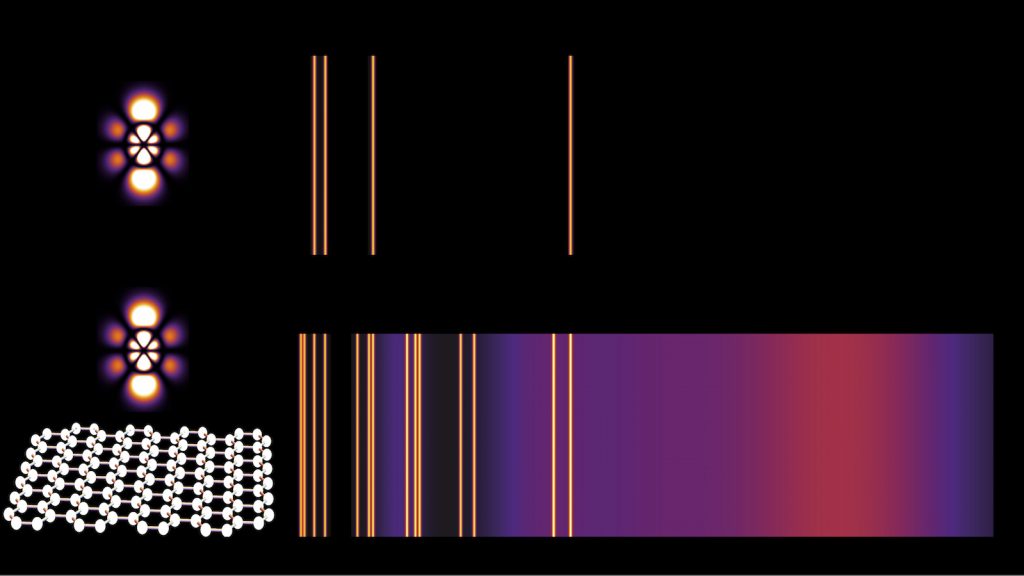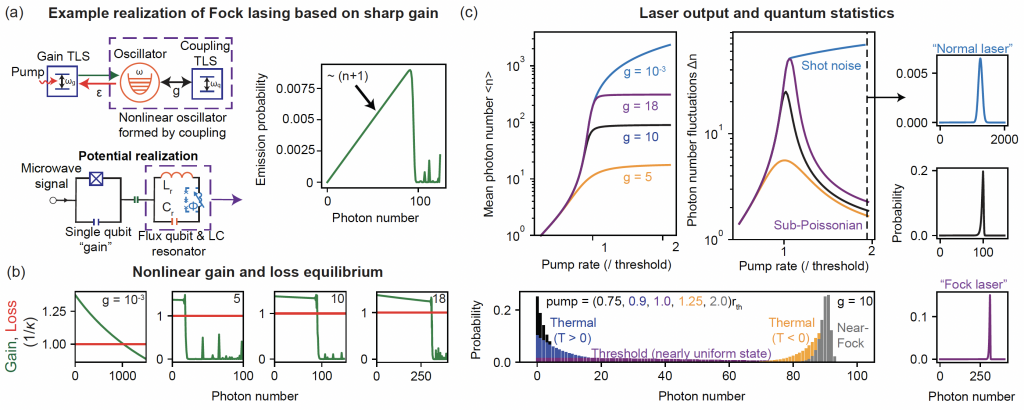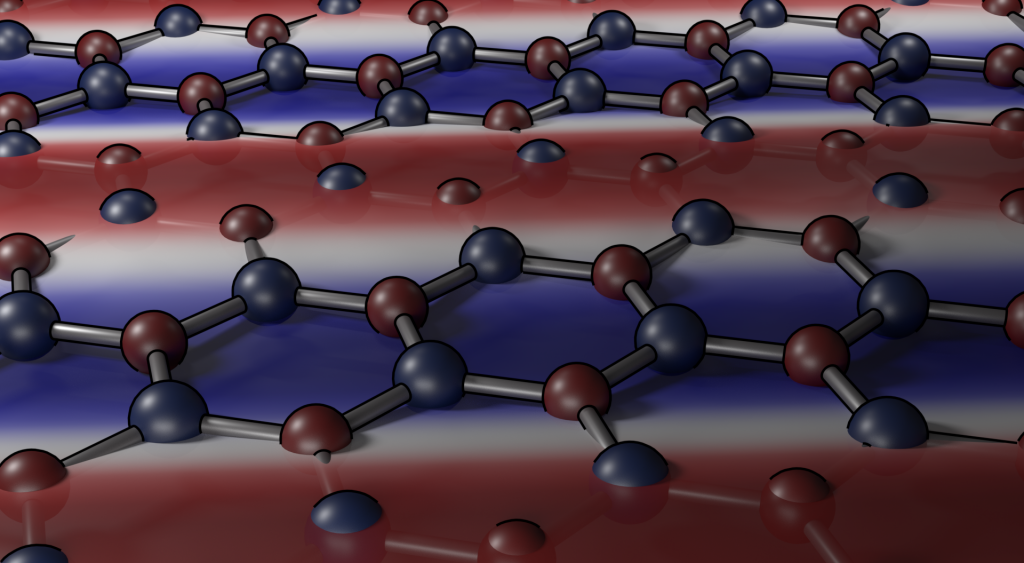My research is focused on the interactions between matter and electromagnetic fields. These interactions are fundamental to a vast number of impactful technologies. As just a few examples, consider the lasers, cameras, particle detectors which have had transformative impact in communication, medicine, defense, and basic research. All of these devices, while seemingly very different, exploit the interaction of light and matter (in many different guises!).
Recent discoveries – in condensed matter physics, in nanophotonics, and in quantum optics – enable the interactions between light and matter to be tailored almost at will; to the point where the interactions can enter regimes that do not occur in natural materials. Such new regimes promise a range of disruptive technologies with applications in quantum sensing and metrology, quantum information processing, spectroscopy, and beyond. Such applications promise to be the same caliber of widespread impact as established technologies resulting from the interactions of light and matter. Some topics we study in service of this goal include collective excitations in solids, 2D materials, strong coupling of light and matter, nanophotonics, lasers, and quantum nonlinear optics.
Below you’ll see an overview of some of the fields I have worked on, and some representative publications.
Light-matter interactions with photonic quasiparticles

Recent work in controlling collective electromagnetic excitations in solids (e.g., plasmons, optical phonons, excitons) enable confinement of electromagnetic energy down to very small volumes. These “shrunken photons” or “photonic quasiparticles”, interact with electrons very differently from photons in vacuum, enabling many new effects, as well as technologies. For some of our work on formulating the laws of light-matter interactions with photonic quasiparticles (in perturbative and non-perturbative regimes), see:
- Charles Roques-Carmes*, Nicholas Rivera*, Ali Ghorashi, Steven Kooi, Yi Yang, Zin Lin, Justin Beroz, Aviram Massuda, Jamison Sloan, Nicolas Romeo, John Joannopoulos, Ido Kaminer, Steven Johnson, and Marin Soljačić. “A general framework for scintillation in nanophotonics.” Science (2022).
- Nicholas Rivera and Ido Kaminer. “Light-matter interactions with photonic quasiparticles.” Nature Reviews Physics (2020) [Review].
- Nicholas Rivera, Liang Jie Wong, John D. Joannopoulos, Marin Soljačić, and Ido Kaminer. “Light emission based on nanophotonic vacuum forces.” Nature Physics (2019).
- Nicholas Rivera, Johannes Flick, and Prineha Narang. “Variational theory of non-relativistic quantum electrodynamics.” Physical Review Letters (2019).
- Nicholas Rivera*, Ido Kaminer*, Bo Zhen, John D. Joannopoulos, and Marin Soljačić. “Shrinking light to allow forbidden transitions on the atomic scale.” Science 353.6296 (2016): 263-269.

Such strong interactions, when taken to non-perturbative regimes, can also lead to fundamentally new nonlinearities that are not found in ordinary materials. These nonlinearities can be of much higher “order” than say third-order Kerr nonlinearities in conventional materials, and can form the basis for new types of optoelectronic devices. For example, such nonlinearities can lead to the development of lasers that produce macroscopic non-classical light, such as Fock states. For our recent theoretical predictions on this work, see:
- Nicholas Rivera, Jamison Sloan, Yannick Salamin, and Marin Soljačić. “Macroscopic condensation of photon noise in sharply nonlinear dissipative systems.” arXiv:2111.03099.
- Nicholas Rivera, Jamison Sloan, Ido Kaminer, and Marin Soljačić. “Fock lasers based on deep-strong coupling of light and matter.” arXiv:2111.07010.
Beyond these areas, I also have worked on a number of other topics, with relevant publications below.
Quantum optical effects with free electrons

- Ron Ruimy, Alexey Gorlach, Chen Mechel, Nicholas Rivera, and Ido Kaminer. “Toward Atomic-Resolution Quantum Measurements with Coherently Shaped Free Electrons.” Physical Review Letters (2021).
- L. J. Wong, Nicholas Rivera, Chitraang Murdia, Thomas Christensen, John Joannopoulos, Marin Soljačić, and Ido Kaminer. “Control of quantum electrodynamical processes by shaping electron wavepackets.” Nature Communications (2021).
- Adi Ben-Hayun, Ori Reinhardt, Jonathan Nemirovsky, Aviv Karnieli, Nicholas Rivera, and Ido Kaminer. “Shaping quantum photonic states using free electrons“. Science Advances (2021).
Phononics in 2D materials

- Siyuan Dai, Wenjing Fang, Nicholas Rivera, Yijing Stehle, Bor-yuan Jiang, Roland Yingjie Tay, Chris Ciccarino, Qiong Ma, Daniel Rodan-Legrain, Pablo Jarillo-Herrero, Edwin Hang Tong Teo, Michael Fogler, Prineha Narang, Jing Kong, and Dmitri Basov. “Phonon-polaritons in monolayers of hexagonal boron nitride.” Advanced Materials (2019).
- Nicholas Rivera, Thomas Christensen, and Prineha Narang. “Phonon polaritonics in two-dimensional materials.” Nano Letters (2019).
- Nicholas Rivera, Gilles Rosolen, John D. Joannopoulos, Ido Kaminer, and Marin Soljačić. “Making two-photon processes dominate one-photon processes using mid-IR phonon polaritons.” Proceedings of the National Academy of Sciences 114.52 (2017): 13607-13612.